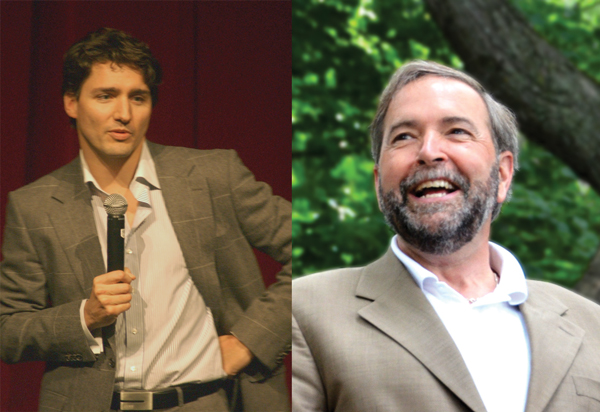It’s about confidence in government, not seats
Photo: CC, Mohammed Jangda, Johnathan Allard
Coalition governments are a positive part of the Canadian political landscape. For most of the 2015 Canadian Election, it seemed the 42nd Parliament would have three parties virtually tied in number of seats—resembling many European countries, who have to go through a complex series of political negotiations to form a government, often ending in a coalition.
Coalition governments demand compromise and teamwork, which leads to moderation and co-operation—which in turn means that coalitions are more likely to reflect the popular will.
There’s a misconception that the leader of the party with the most seats becomes Prime Minister. Instead, the incumbent PM always gets the first shot at forming the government. The formed government must then gain the confidence of Parliament, so it can pass budgets and legislation.
If the PM can’t gain the confidence of Parliament, or chooses not to form a government, the Governor General can then invite another party to form a government, which must then gain the confidence of Parliament. This process continues until a stable government is formed. If a stable government can’t be established, the Governor General will usually call new elections. This system helps us avoid falling into government lockdowns, as happens regularly in the U.S.
The consequence of our political system is that the government of the day needs to have a majority of the Members of Parliament (MPs) voting in favour of the government.
If the government isn’t led by a majority party, the government will need the support of other parties to pass legislation, which can be achieved by forming a coalition.
Coalitions are also more stable than having a minority governments, which constantly seek to make compromises with other parties. An example of this is the former British governing coalition, which ensured a stable government during an economic crisis, while maintaining some social programs. Unfortunately, the fixed election date law forced the two parties to stay together long after they had exhausted all possible compromises.
However, there are still a number of initiatives possible to handle the issue of confidence in governments.
First, the fixed election date law could be scrapped—these laws lead to coalition governments being forced to stay together long after their best-before date.
Second, the Canadian government could draft a cabinet manual detailing the regulations and conventions of running a government, like in the U.K. Another important thing to consider is electoral reform, as first-past-the-post systems like ours tend not to result in coalitions. With the two main progressive parties both advocating electoral reform, coalition governments might become business-as-usual for the Canadian government.




